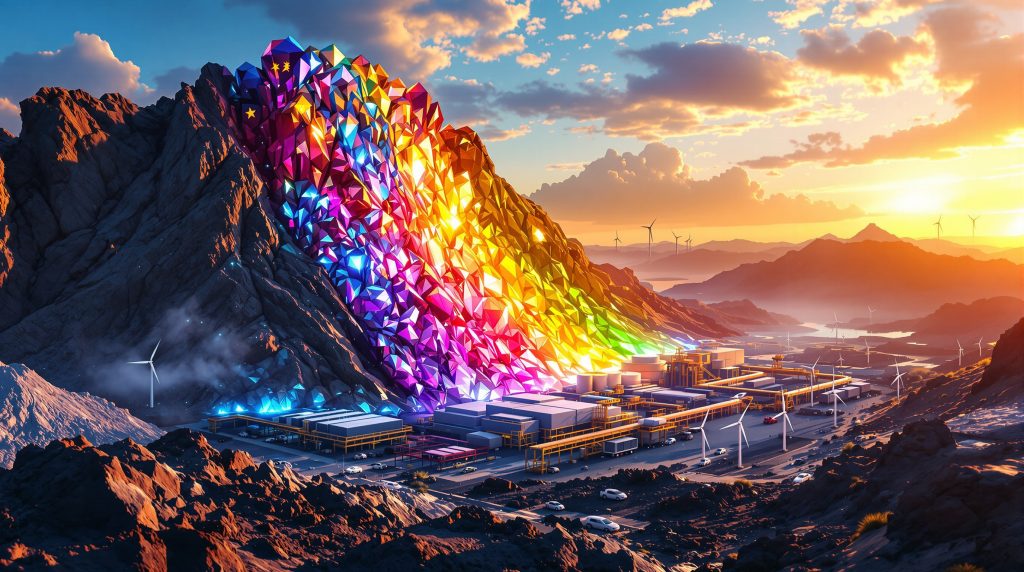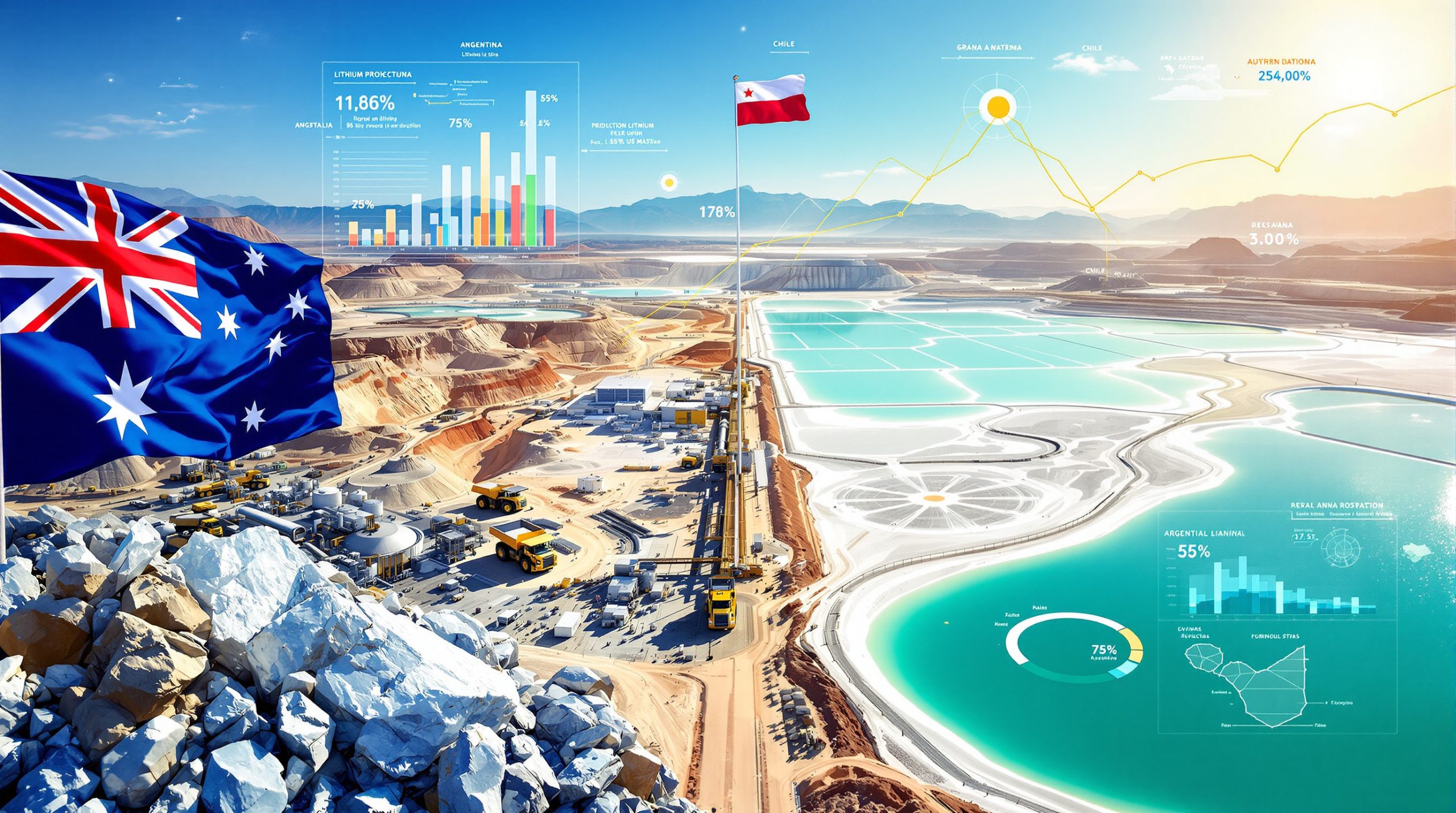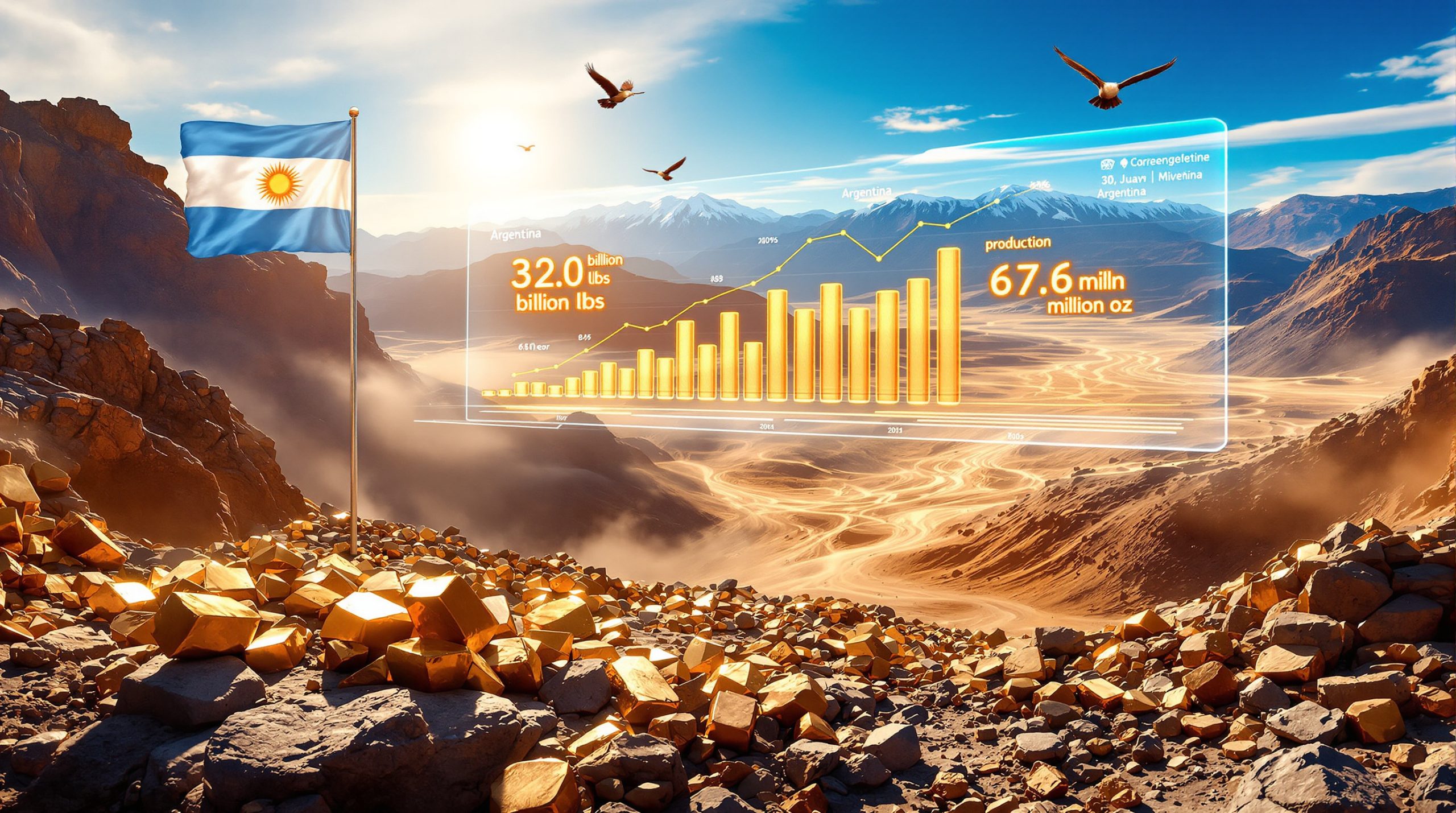How Is Lynas Expanding Its Rare Earth Operations?
Lynas Rare Earths, the world's largest producer of separated rare earth products outside China, is implementing a multi-billion dollar global expansion strategy to meet growing demand for critical minerals energy. This ambitious growth comes at a crucial time, as geopolitical tensions increase and Western nations scramble to secure supply chains independent from Chinese dominance in the rare earths market.
What Strategic Vision Drives Lynas' Expansion Plans?
Lynas is pursuing a comprehensive growth strategy focused on vertical integration, geographical diversification, and technological advancement. The company aims to strengthen its position as a key supplier to Western markets for critical minerals essential to renewable energy, electric vehicles, and defense applications.
The company has outlined a strategy extending to 2030 that focuses on heavy rare earth production rather than simply expanding total capacity. This strategic pivot recognizes China's dominance in producing over 90% of the world's rare earth magnets used in electric vehicles, consumer electronics, and military applications.
Key Elements of Lynas' Strategic Vision
- Vertical integration from mining through processing to customer partnerships
- Geographical diversification across Australia, Malaysia, and the United States
- Focus on both light and heavy rare earth elements production
- Development of sustainable and environmentally responsible operations
- Strategic partnerships with downstream manufacturers and government entities
CEO Amanda Lacaze has emphasized the need to capitalize on rapid market evolution, stating: "We need to take this opportunity where the market is really evolving rapidly." This urgency reflects the company's recognition of a unique window to establish itself as the dominant non-Chinese supplier in the global rare earths market.
How Is Lynas Funding Its Global Expansion?
In August 2025, Lynas announced a substantial A$750 million (US$488 million) capital raising to accelerate its expansion plans. This significant fundraising effort comes in direct response to China's export controls implemented in April 2025, which created widespread supply disruptions and price volatility in global rare earth markets.
Details of the Capital Raising
- A$750 million fully underwritten share placement at A$13.25 per share, representing a 10% discount to the August 27 closing price
- Additional non-underwritten share offering to raise up to A$75 million
- Strong market response with Lynas shares more than doubling in 2025, closing at A$14.73 on August 27 before trading halt
- Notable backing from Australian billionaire Gina Rinehart through Hancock Prospecting, which holds an 8.2% stake as second-largest shareholder
The funds will be strategically allocated toward streamlining existing operations, modifying the company's Australian mine, and expanding Malaysian processing plants. Industry analysts note that the successful capital raise demonstrates strong investor confidence in Lynas' expansion strategy despite short-term profit challenges.
Rinehart has been systematically building a diversified portfolio of rare earth investments beyond Lynas, including stakes in US-backed MP Materials, Arafura Rare Earths, and Brazilian Rare Earths, alongside several lithium producers.
What Improvements Is Lynas Making to Its Australian Operations?
Lynas is significantly expanding its Australian operations through two major projects: enhancing the Mt Weld mine expansion project and developing the Kalgoorlie processing facility. These investments strengthen the upstream portion of Lynas' supply chain and reduce dependence on overseas processing.
Mt Weld Mine Expansion
- Increasing mining capacity and concentrate production
- Upgrading processing equipment for improved efficiency
- Enhancing resource recovery and grade optimization
- Implementing sustainable mining practices and water management systems
The Mt Weld mine in Western Australia contains some of the world's highest-grade rare earth deposits, providing Lynas with a competitive advantage in resource quality and extraction costs compared to many other projects globally.
Kalgoorlie Processing Facility Development
- Australia's first rare earths processing facility
- Processes concentrate from Mt Weld mine through cracking and leaching
- Produces mixed rare earth carbonate for further separation
- Creates domestic processing capability reducing reliance on overseas facilities
The Kalgoorlie facility represents a significant milestone in Australia's critical minerals strategy, establishing domestic processing capabilities that previously existed only in China and Malaysia within Lynas' supply chain.
How Is Lynas Enhancing Its Malaysian Processing Operations?
Lynas operates its primary separation facility in Malaysia, where it converts mixed rare earth materials into individual rare earth products. The company is expanding these operations to increase production capacity and develop new capabilities for processing heavy rare earths.
CEO Lacaze has indicated Malaysia could become a comprehensive supply hub for the entire rare earth value chain, reflecting the strategic importance of the country to Lynas' global operations.
Malaysian Processing Expansion Plans
- Upgrading existing separation circuits for increased throughput
- Developing new processing lines for heavy rare earth elements
- Implementing efficiency improvements to reduce operating costs
- Enhancing environmental performance and waste management systems
The Malaysian facility represents a critical node in Lynas' supply chain, providing advanced separation capabilities that are extremely limited outside China. Expansion of these facilities will allow Lynas to further capitalize on its position as the only significant producer of separated rare earth products outside Chinese control.
What Progress Has Lynas Made in Heavy Rare Earth Production?
One of Lynas' most significant achievements is becoming the first producer of separated heavy rare earth elements outside China. This breakthrough gives Western supply chains access to these critical materials, which are specifically targeted by Chinese export controls.
Heavy Rare Earth Production Achievements
- First production of separated dysprosium and terbium outside China
- Development of proprietary separation technology
- Establishment of commercial-scale production capabilities
- Creation of a non-Chinese supply source for these critical elements
Lynas' 2030 strategy focuses on producing more heavy rare earths rather than simply adding total capacity, recognizing the strategic importance of these particular elements in high-performance magnets used in defense and clean energy applications.
Heavy rare earths, including dysprosium and terbium, command significantly higher prices than light rare earths due to their scarcity and critical applications in high-temperature permanent magnets. Securing non-Chinese sources of these materials has become a national security priority for many Western governments.
What Challenges Is Lynas Facing with Its US Expansion?
Lynas has been developing the Seadrift project in Texas to establish rare earth processing capabilities in the United States. However, this project faces significant uncertainties following recent developments in US rare earth policy.
US Expansion Challenges
- Uncertainty about the Seadrift plant proceeding as originally conceived
- Competition from Pentagon-backed MP Materials, which secured a landmark deal
- Questions about the level of government support Lynas can expect
- Need to reevaluate the project scope and business model
CEO Lacaze has publicly acknowledged the uncertainty, stating: "There is significant uncertainty that the Seadrift plant will proceed as has been conceived previously." She emphasized that developing new processing facilities can be "long and uncertain," highlighting the importance of protecting existing supply chains outside China.
The Pentagon's recent landmark agreement with MP Materials creates significant questions about the level of US government support Lynas can expect for its American operations, potentially requiring a strategic pivot or revised approach to the US market.
How Is Lynas Positioning Itself in the Downstream Supply Chain?
Lynas is exploring opportunities to participate in downstream manufacturing through joint ventures or partnerships. This vertical integration would extend the company's presence across the rare earth value chain and create additional revenue streams.
Downstream Integration Strategy
- Potential partnerships with metal or magnet manufacturers
- Focus on opportunities in the US or other Western markets
- Exploration of Malaysia as a potential supply hub for all parts of the supply chain
- Discussions with governments about guaranteed floor prices for rare earth sales
Lynas is actively engaged in discussions with US, Japanese, and Australian governments about the possibility of guaranteed floor prices for rare earth sales, similar to the minimum prices included in the Pentagon's deal with MP Materials. These price guarantees would ensure supply viability over the long term, regardless of Chinese market manipulations.
What External Factors Are Influencing Lynas' Expansion?
Several external factors are shaping Lynas' expansion strategy, including geopolitical tensions, government policies, and market dynamics. These factors create both opportunities and challenges for the company's growth plans.
Key External Influences
- China's export controls implemented in April 2025 as a response to US trade policies
- Chinese rare earth shipments jumping in July 2025 to their highest since January
- Western government initiatives to secure critical raw materials facility
- Increasing demand for rare earths in renewable energy and defense applications
- Competition from other rare earth projects receiving government support
China's decision to "weaponize its grip on production" through export controls has accelerated Western efforts to develop alternative supply chains, creating both opportunity and urgency for Lynas' expansion plans.
The geopolitical dimension of rare earth supply has become increasingly prominent, with China using its dominant position as leverage in broader trade negotiations with US President Donald Trump's administration. Furthermore, the Trump critical minerals order has emphasized the importance of securing domestic supply chains for these materials.
How Is Lynas' Financial Performance Supporting Its Growth?
While Lynas is investing heavily in expansion, the company's financial performance has been impacted by market volatility and operational challenges. The company reported significantly lower profits for the fiscal year ending June 30, 2025.
Financial Performance Overview
- Net income of A$8 million for the year to June 30, 2025
- Result fell below analyst consensus of A$23.5 million
- Stock more than doubled in 2025 despite profit challenges
- Strong investor support for expansion strategy despite short-term earnings pressure
Citigroup noted that the absence of state participation in the capital raising could signal that government support is "not forthcoming immediately," potentially making near-term valuations vulnerable to a reset. This highlights the ongoing challenge of balancing short-term financial performance with long-term strategic investments.
What Future Developments Can We Expect from Lynas?
Looking ahead, Lynas has outlined a strategy extending to 2030 that focuses on several key areas of development. The company aims to strengthen its position as the leading non-Chinese supplier of rare earth materials while expanding its product portfolio and market reach.
2030 Strategic Priorities
- Increased production of heavy rare earths targeted by Chinese export controls
- Participation in downstream joint ventures for metals or magnets
- Potential development of Malaysia as a comprehensive supply hub
- Ongoing discussions with governments about guaranteed floor prices
The company's focus on heavy rare earths rather than total capacity expansion reflects a strategic decision to target the highest-value segments of the market where Chinese control creates the greatest supply vulnerability for Western nations.
Potential Industry Impact
- Creation of a more resilient global rare earth supply chain
- Reduced Western dependence on Chinese rare earth supplies
- Development of new processing technologies and capabilities
- Establishment of integrated supply chains outside China
Lynas' expansion efforts could significantly reshape the global rare earths industry, creating more diverse and resilient supply chains for critical minerals essential to clean energy and defense applications. Additionally, this expansion could drive significant mining industry innovation and encourage mining industry consolidation as companies seek to secure positions in strategic mineral supply chains.
FAQ: Lynas Rare Earths Expansion
Who is backing Lynas' expansion plans?
Australian billionaire Gina Rinehart through Hancock Prospecting is a significant backer, holding an 8.2% stake in Lynas as second-largest shareholder. Rinehart has also invested in other rare earth producers including MP Materials, Arafura Rare Earths, and Brazilian Rare Earths, along with several lithium producers.
Why are rare earth elements strategically important?
Rare earth elements are critical components in technologies essential for renewable energy, electric vehicles, and defense applications. China produces more than 90% of the world's rare earth magnets, creating supply vulnerabilities for Western nations in sectors vital to economic and national security.
How did China's export controls affect the rare earth market?
China implemented export controls on rare earth elements in April 2025, causing supply disruptions and price volatility. This action was viewed as a response to US trade policies and highlighted the risks of concentrated supply chains dominated by a single nation with potentially competing geopolitical interests.
What are heavy rare earth elements and why are they significant?
Heavy rare earth elements include dysprosium and terbium, which are particularly valuable due to their use in high-performance magnets and other advanced applications. These elements were specifically targeted by Chinese export controls due to their strategic importance and limited global supply outside China.
How are governments supporting rare earth development outside China?
Governments are providing financial backing, offtake agreements, and policy support for rare earth projects. The US Department of Defense recently backed MP Materials with a landmark deal, while discussions are ongoing about guaranteed floor prices for rare earth sales to ensure long-term viability regardless of market manipulations.
Further Exploration:
Readers interested in learning more about the global rare earths industry can explore related educational content at Mining.com, which offers regular updates on developments in the critical minerals sector.
Want to Invest in the Next Major Mineral Discovery?
Discovery Alert's proprietary Discovery IQ model delivers real-time notifications on significant ASX mineral discoveries, turning complex exploration data into actionable investment opportunities. Explore our dedicated discoveries page to understand why early identification of major mineral finds can generate substantial returns, and begin your 30-day free trial today.




